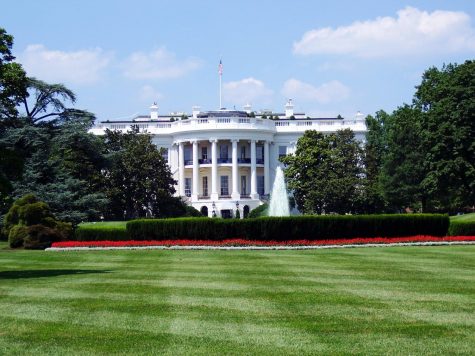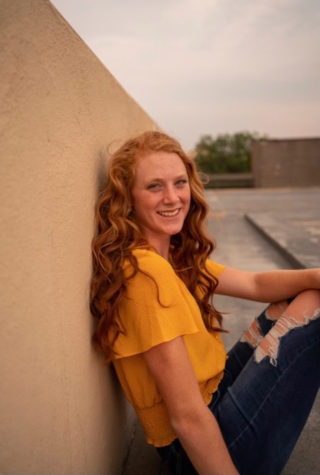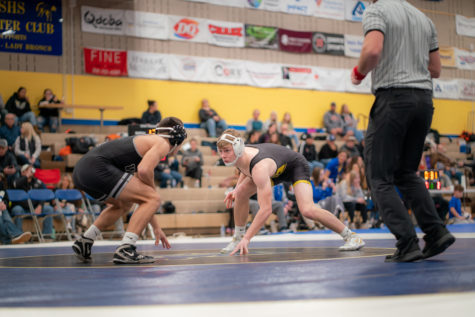Catcalling: It really IS a big problem everywhere
Sexual assault is mistakably deemed less serious than it truly is. Our media has slowly stamped this false sense of security into our minds, as if we are unharmed by the chance of sexual assault happening to us personally. In actuality, one in four women will experience some form of sexual harassment throughout their lifetime, and one in six men will claim the same fate. Among these advances, catcalling is one of the most highly committed, though it is still considered simply an annoyance.
Living in a town as small as Sheridan, it is hard for many of us to believe that being catcalled is a common offense; we don’t experience it in its true severity because it is more common in bigger and more diverse cities. It may have happened to you once or twice, but our tight-knit community has kept itself close and generally peaceful. We have adapted to this idea that the catcalling we have faced is only mild.
If you take a look into cities such as Chicago, New York, or even Billings, however, it is vastly different. Several attempts to prove this point have undergone over the past year, including one viral video with over 41 million views entitled, “10 Hours of Walking In New York Alone as A Woman.” Illustrating what big city life is like as 25-year-old female, ShoShana Roberts is shown walking the streets of the Big Apple in silence, dressed in only jeans and a T-shirt. Over the course of these 10 hours, she is catcalled 108 times, which doesn’t include the countless winks and whistles. Examples of what can be seen in the video include, “Hey, baby! How’s it going?” and “Somebody’s acknowledging you for being beautiful–you should be thankful and smile more.” Several of the men try to force her into starting a conversation, and call her stuck up when she ignores them. The catcalls come in many forms, and while a majority are shouts from men she passes on the street, there are some instances of men following her for several minutes, uncomfortably close.
Responses to this glimpse into the commonality of catcalling having been mixed; many agreed that the issue is a severe and valid form of sexual assault, while a handful of others instantly turned to blaming the victim herself, saying her jeans and shirt were too tight and “What does she expect with a body and clothes like that?” Many commenters insist that if she had chosen
“less-revealing” clothes, she would have been left alone. Instead of teaching men how to be respectful, women are now being told what they can and can’t wear if they want to avoid street harassment. These comments only support the line of reasoning often used when describing rape culture–that men are brutes unable to control their sexual impulses.
Mainly, though, the comments ShoShana receives are composed of a “good morning” or “how are you?”, which is where the most common criticisms of the video come from- those questioning how this could be taken as street harassment. However, anyone with an ounce of common sense can watch that video and understand that many of these men weren’t interested in wishing a random person a good day–in fact, one of the most common forms of catcalling are moments such as these, where men aggressively ask you how your day is going. These are degrading and abusive forms of targeting the victim.
Desperately seeking justification for abusers is not a rare event. Hashtags and comments containing traces of victim-blaming are apparent in many places of our daily lives, whether or not we realize it. I find them littered through my Twitter mentions, or as I scroll through my Facebook timeline; I’ve discovered them hidden in the creases of everyday conversation as I make my way through hallways. Hashtag, askingforit. Having all of your friends and family asking, “…But, what were you wearing?” or “Don’t leave the house like that, you’ll just attract the wrong kind of attention.” People are constantly conjuring reasons why victims “deserved” to be catcalled or sexually assaulted in any way. There is never a reason to blame anyone but the assailant, the verbal abuser–there are no ifs, ands, or buts about it.
In order to express how extreme catcalling is, I took it upon myself to conduct a Twitter poll regarding catcalling and sexual assault. In a series of seven tweets, I asked viewers whether or not they have ever been catcalled, how often it has happened to them, and the age in which they were first catcalled (below or above 13). I also asked their opinions on making catcalling illegal, or whether they felt that it was a serious act of sexual assault at all. Of the overwhelming 400+ responses I received, 80% of people reported that they had been catcalled at least once before, with a staggering 52% of them reporting it had happened over 10 times so far in their lives. Over 65% of poll-takers had it happen before they had even reached the age of 13. I found it very interesting that the question “should catcalling be made illegal?” resulted in an even 50-50 between the choices “yes” and “indifferent.” Of every single person who took part in this poll, not a single one of them checked “yes” in regard to whether they felt flattered or complimented after being catcalled.
Sexual harassment is so much more than this picture we’ve been taught to paint for ourselves. Do not confuse one story for all stories. It is not always men leaning from car windows and whistling at teenagers as they walk down the street, like we have so commonly been taught. It’s not just dark alleyways littered with the secrets of victims left to rest there. It plagues so many more places than just college campuses, or your stereotypical frat parties, or other places we have yet to discover. It comes from our friends, from people we thought we could trust, in both sobriety and while inebriated, and in and out of relationships. It comes from strangers and from people we’ve known since the second grade. This fact is something our culture has such a hard time accepting. We have to stop pretending that sexual assault isn’t real or serious if it isn’t happening to us. Ignoring it solves nothing. Allowing catcalling to continue only turns into a snowball effect. Who knows where it will stop? When will victim’s stop being blamed for their assailants error?
What a person wears or looks like has little to do with street harassment. Our society has to understand that placing women into these vicious categories of what is “acceptable” for them to be doing is a form of harassment in itself. Women should be able to walk the streets in whatever choice of outfit they prefer without having to fear catcalls or any other threat of their personal safety. It is sickening that females should be stripped of their right to confidence in their own skin just to avoid unwanted attention. I can only hope that someday, all people will be able to walk the streets in peace.








